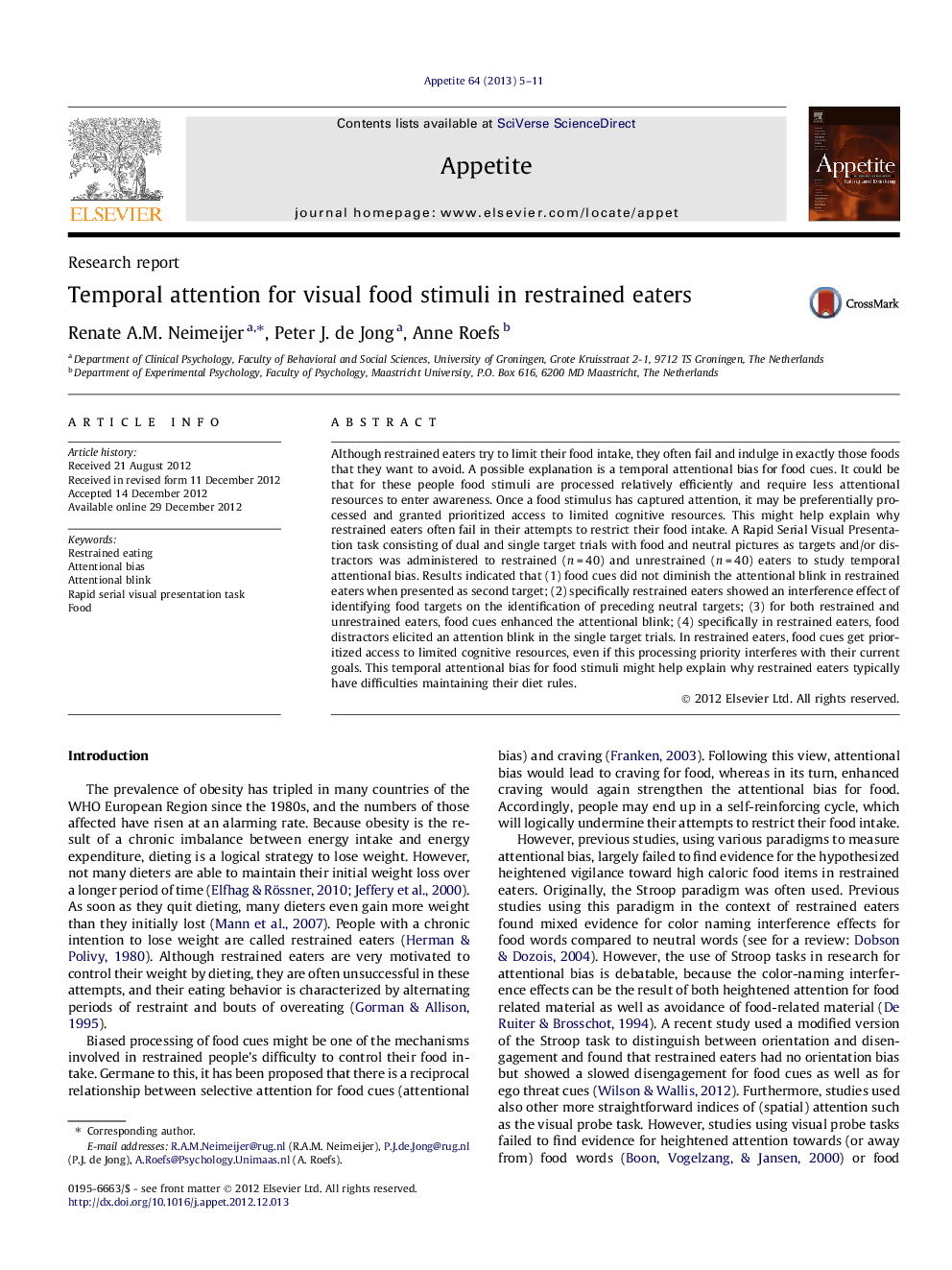| کد مقاله | کد نشریه | سال انتشار | مقاله انگلیسی | نسخه تمام متن |
|---|---|---|---|---|
| 939741 | 1475416 | 2013 | 7 صفحه PDF | دانلود رایگان |

Although restrained eaters try to limit their food intake, they often fail and indulge in exactly those foods that they want to avoid. A possible explanation is a temporal attentional bias for food cues. It could be that for these people food stimuli are processed relatively efficiently and require less attentional resources to enter awareness. Once a food stimulus has captured attention, it may be preferentially processed and granted prioritized access to limited cognitive resources. This might help explain why restrained eaters often fail in their attempts to restrict their food intake. A Rapid Serial Visual Presentation task consisting of dual and single target trials with food and neutral pictures as targets and/or distractors was administered to restrained (n = 40) and unrestrained (n = 40) eaters to study temporal attentional bias. Results indicated that (1) food cues did not diminish the attentional blink in restrained eaters when presented as second target; (2) specifically restrained eaters showed an interference effect of identifying food targets on the identification of preceding neutral targets; (3) for both restrained and unrestrained eaters, food cues enhanced the attentional blink; (4) specifically in restrained eaters, food distractors elicited an attention blink in the single target trials. In restrained eaters, food cues get prioritized access to limited cognitive resources, even if this processing priority interferes with their current goals. This temporal attentional bias for food stimuli might help explain why restrained eaters typically have difficulties maintaining their diet rules.
► We used RSVP tasks to test temporal attentional biases for food in restrained eating.
► Independent of restrained status, food targets enhanced the attentional blink.
► In restrained eaters, identification of food targets hampered identification of preceding targets.
► Specifically restrained eaters showed bottom up processing priority of food cues.
► Temporal attentional biases may help explain why restrained eaters often fail.
Journal: Appetite - Volume 64, 1 May 2013, Pages 5–11